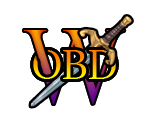In the OBD, a mechanism is defined as how a weapon/power/ability works. Knowing a power's mechanism can help you make many more accurate judgements about it in a battle. For an ability with an unknown mechanism, the only way it can be quantified is to analyze its effects, but that is not so if you know the mechanism.
For example, say you have a character that has the ability to make things explode simply by touching them. If the mechanism is unknown, then that ability is limited in a battle by such factors as the size, composition, and durability of the things he has destroyed this way.
However, if it is revealed that the mechanism is the reversal of the strong nuclear force, which will destroy any atoms in an object he touches, then we can make more informed judgements. Even if the strongest thing he has destroyed with this ability is a block of steel, we can assume it will work on things much tougher than steel as long as they are made of matter and have atomic nuclei bound by the SNF. This is sort of a way to skirt around theno-limits fallacy, but in reality what it is doing is shifting the burden of proof by virtue of more information on the one side. So in our above example, the burden of proof is no longer on the character to prove his ability can explode the target, but on the target to prove it can resist its atoms being disrupted in such a fashion.
Of course such situations are often more complicated than this, with mitigating factors on both sides, but this article is just to give you a general idea of the concept.
